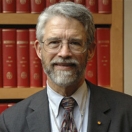
About 1.3 billion years ago and 1.3 billion light-years from Earth, the collision of two black holes produced a powerful burst of gravitational waves—ripples in the fabric of space and time whose existence Albert Einstein first predicted in 1915, based on his general theory of relativity. Einstein thought that such waves would be too weak to be detected on Earth, but scientists have been actively looking for them for 50 years.
As announced yesterday, February 11, by the National Science Foundation and the leaders of an extraordinary NSF-funded team of scientists and technicians, that search has finally succeeded: this past September, the power of that burst from 1.3 billion years ago, together with the upgraded sensitivity of the detector the team built, combined to produce the first-ever observation of the phenomenon that Einstein said, a century ago, had to exist. (The months between the observation in September and yesterday’s announcement were spent in intensive examination and re-examination of the signal by the team, and by peer reviewers, in order to ensure beyond reasonable doubt that there could be no explanation other than gravitational waves for what had been observed.)
The instrument that made this breakthrough, called the Laser Interferometer Gravitational Wave Observatory (LIGO), actually consisted of two facilities, one in Louisiana and one in Washington state. The twin detectors have been described as the most precise measuring devices ever built. NSF was the principal funder, having put more than a billion dollars into the development, construction, and operation of LIGO over the last few decades, but organizations in Australia, Germany, and the U.K. also contributed.
Was it worth it? Few scientists would say otherwise. The result is not just an immensely important confirmation of a hitherto untested prediction of general relativity. It also opens up a whole new window into what is going on in the universe—a new way to do astronomy, based on the information gravitational waves carry about the extraordinary events that spawn them at detectable scale.
The LIGO effort involved more than 1,000 researchers—some 250 students among them—from 15 countries and a larger number of universities. I join, I’m sure, the entire global scientific community in congratulating them and their funders, foremost among them the National Science Foundation, for their vision, ingenuity, persistence, and collaboration in the successful pursuit of one of history’s greatest scientific discoveries.
Dr. John P. Holdren is Assistant to the President for Science and Technology and Director of the White House Office of Science and Technology Policy.


